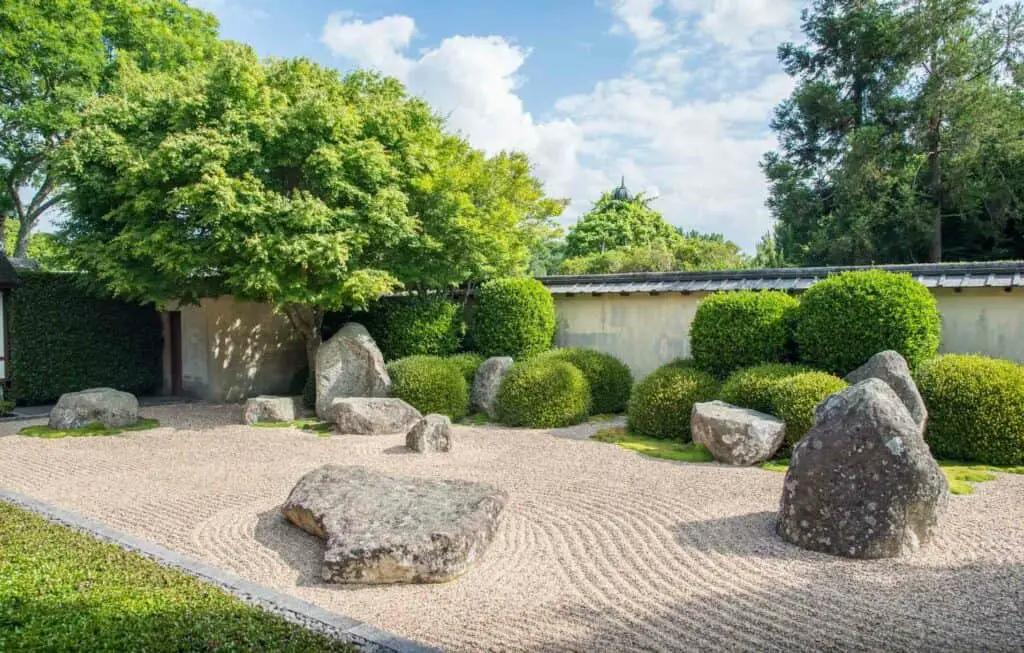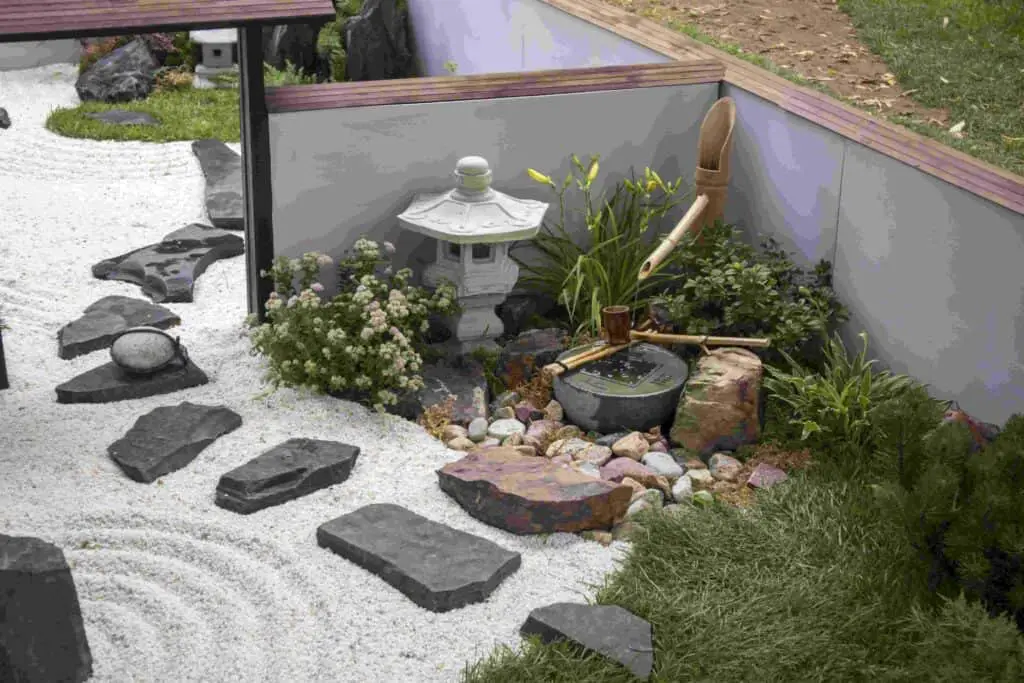Japanese gardens combine the philosophical principles of Zen Buddhism and the Japanese native religion, Shinto. Shintoism believes that deities reside in every natural element, while Zen represents meditation. But, what are the principles of a Japanese garden?
The principles of a Japanese garden come from Zen, and they are simplicity, elegance of simplicity, asymmetry, nature, tranquility, allusion, and astonishment. When creating a Japanese garden, you must adopt and represent these seven principles.


If you research the seven principles in detail, you could create your Japanese garden. This guide will help you understand more about the garden’s elements, design, and purpose.
What Are the Principles of a Japanese Garden, and How Are They Applied?
Asymmetry is one of the main principles of Japanese gardens because they’re never laid out symmetrically or on a straight axis. This would imply one central, eye-catching feature, which isn’t the point.
Being in Japanese gardens should evoke serenity throughout the entire area. Buildings are usually diagonally placed from the gate view. The principle of allusion refers to concealed elements or those made to appear larger.
Placing large rocks and trees into the foreground makes the garden seem bigger, and concealing smaller elements behind them gives the impression of continuously discovering and experiencing new things.
You Can Create a Japanese Garden In Your Backyard
The main goal of a Japanese garden is to attract simplicity and calmness into your surroundings. If you make room in your backyard, you can decorate it in the Zen garden style.
The materials for your garden can be found in the surrounding area, but you can also buy some additions, like the stone lanterns and bridges.
Since a Japanese garden is a miniature, idealized version of a natural landscape, you can add rocks, sand, and water to symbolize the mountains, the ocean, and the shore.

The Key Elements of a Japanese Garden Design
While we fill our gardens with flowers and eye-catching flora in the West, the Eastern, specifically Japanese gardens, don’t emphasize their use.
In a Japanese garden, the emphasis is on using as many natural elements as possible that match the surroundings. Rocks, shrubbery, plants, water, and sand are the main ones, but there are also some flowers, trees, bridges, fences, gates, water basins, and stone lanterns.
Create a Flow and Follow the Surroundings
Not just one element stands at the center of a Japanese garden because the entire landscape is a work of art. Make sure to follow your surroundings’ flow and match it with the garden’s landscaping. Add a water feature to give the area a special, meditative touch.
Don’t Use Fake Materials and Stay Guided by the Meaning of Japanese Gardens
When you buy materials for your Japanese garden, don’t use anything artificial. You can play with the existing materials like trees, rocks, and plants in the backyard. There’s no need to remove any nature from the current landscape to create your Zen environment.
You can get ideas by researching the main principles of a Japanese garden and looking at others’ work. The concepts of serenity and meditation should be the key motivation and reason for creating your garden.